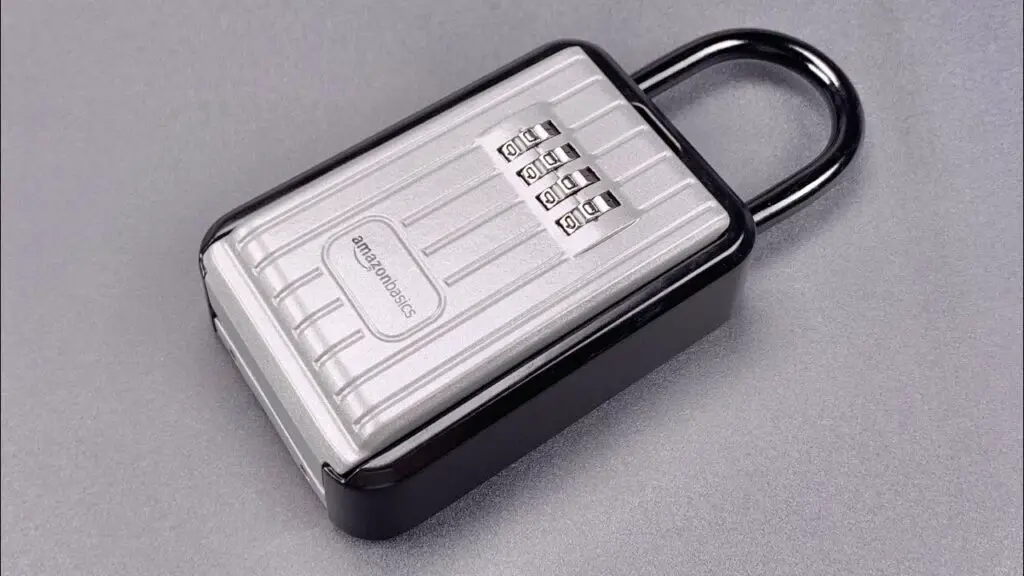Introduction
How To Unlock A Lockbox: Unlocking a lockbox can often seem like a daunting task, especially when you find yourself without the proper key or combination. Whether you’re dealing with a forgotten code, a misplaced key, or a jammed mechanism, the process of gaining access to a lockbox requires a methodical approach and a bit of patience. Fortunately, with the right knowledge and a few handy tools, you can successfully navigate through the challenges and unlock a lockbox securely.
We will explore various techniques and steps to help you unlock different types of lockboxes while keeping in mind the importance of legality, safety, and respect for personal property. Whether you’re a homeowner, a real estate professional, or simply someone seeking access to your belongings, mastering the art of unlocking a lockbox will prove to be a valuable skill. Unlocking a cylinder lock box is a practical skill that comes in handy in a variety of situations.
Whether you’re a realtor who needs to access property keys, a traveler safeguarding valuables, or just someone who has found themselves locked out of their own possessions, knowing how to open a lockbox can be a true lifesaver. The process may seem perplexing at first glance, but with a clear understanding of the mechanisms and some step-by-step guidance, you can quickly become adept at tackling this challenge.

How do you unlock a lock box without a key?
Shimming
If your lockbox has a padlock securing it, it could be a phony security device. Shimming open most inexpensive padlocks is possible by inserting two thin metal bits between the shackle and the lock body. You can improvise a shim using a pair of scissors and an aluminum can.
Some lockboxes have a numeric combination. If you have an idea of what the combination might be – whether it’s based on common patterns, personal details, or guesswork – you can attempt various combinations systematically. This method, however, can be time-consuming and is less likely to work unless you have a good reason to believe in a specific combination.
Sometimes, individuals can manually manipulate lockboxes with mechanical dials. By gently turning the dial and listening for subtle clicks or changes in resistance, you might be able to deduce the correct combination over time. However, this method requires a keen ear, patience, and a fair amount of trial and error.
In some cases, lockboxes can be vulnerable to bypass techniques that exploit design weaknesses. This might involve using tools to manipulate internal components or apply slight pressure to disengage the locking mechanism. Stressing that these methods are not recommended is important because they can damage the lockbox, raise ethical concerns, and potentially be illegal.
When authorized, seeking the assistance of a professional locksmith is the safest and most reliable option. Locksmiths possess the expertise, tools, and knowledge needed to open lockboxes without causing damage. They can also provide valuable advice on maintaining security while ensuring access.
If keys are locked, what should you do?
How to Get Your Keys From a Locked Car
- First Things First: Always Have a Spare Key.
- Download the Manufacturer’s Phone App.
- Use a String To Unlock Your Car Door.
- Use a Wire Clothes Hanger.
- Use an Inflatable Wedge.
- Call a Locksmith or Roadside Assistance.
- In an Emergency, Contact the Police.
First and foremost, try to remain calm. It’s natural to feel anxious or upset, but a clear mind will help you think rationally and make informed decisions.
Take a moment to evaluate the circumstances. Are you locked out of your home, car, or another type of property? Understanding the specific scenario will guide your approach.
If you have a spare key stored in a safe place or with a trusted friend or family member, now is the time to retrieve it. Spare keys can be a quick and effective solution to the problem.
If you don’t have access to spare keys, consider calling a professional locksmith. Locksmiths receive training to manage various lockout situations and can frequently offer prompt assistance. Ensure that the locksmith is reputable and licensed.
If you’re dealing with a car lockout, contact your vehicle’s manufacturer or a trusted roadside assistance service. They might be able to help you unlock the vehicle without causing damage.
If you find yourself locked out of a rental property, contact your landlord or property manager to ask for their help in gaining access.
How does a lockbox work?
Lockbox banking is a service provided by banks to companies for the receipt of payment from customers. The service directs customer payments to a special post office box instead of the company.
Combination Setting: To set up a mechanical lockbox, the owner or authorized user selects a numeric combination. This combination is a sequence of numbers that, when entered correctly, aligns the internal tumblers or pins in a specific pattern.
Locking: Once the combination is set, closing the lockbox door engages the locking mechanism. The internal tumblers or pins align according to the chosen combination, preventing the door from opening.
Unlocking: To unlock the lockbox, the user must enter the correct combination by turning the combination dial or rotary dial in the prescribed sequence. When you enter the correct combination, the internal pins or tumblers align perfectly, allowing the door to open.
Resetting: The combination can be reset by the owner or authorized user as needed, providing a versatile level of security.
Keypad Entry: Electronic lockboxes feature a keypad with buttons that users can press to input a code. The code can be a numeric sequence or even a combination of letters and numbers.
Access Control: Authorized users enter the predefined code on the keypad to unlock the lockbox. Some electronic lockboxes might also include biometric features like fingerprint scanners for added security.
How do you open a steel lockbox?
Rogues with the Pick Lock skill learned at level 16 can open lockboxes and chests, and the level of your character determines your max lockpicking skill. The basic formula is ‘char level x 5’.
If you’re unable to open the steel lockbox using the key or combination, consider contacting a professional locksmith. Locksmiths have the expertise and specialized tools to open locks without causing damage. They can help you gain access to the lockbox while maintaining its integrity.
Professionals or individuals with proper training should attempt lock picking exclusively. Using lock picking tools to open a steel lockbox requires skill and knowledge of the lock’s internals. Attempting to pick a lock without expertise can lead to damage and potential legal issues.
In cases where you have ownership of the steel lockbox but can’t open it, reaching out to the manufacturer might be an option. Some manufacturers offer assistance to help owners regain access to their lockboxes, although this process could take time.
Legal Rights: Always ensure you have the legal right to access the contents of the lockbox before attempting to open it. Unauthorized attempts to open someone else’s lockbox can lead to legal consequences.
Security and Integrity: Be cautious when attempting to open a steel lockbox, as improper methods can cause damage to both the lock and the box itself. Prioritize preserving the security and integrity of the lockbox.
Why is my combination lock not opening?
Clean Up Rust and Other Build-up
Additionally, other build-ups like grime, dirt and dust do not stay behind in causing problems either. Over time, it is only natural for your combination lock to accumulate these elements in its dials. This can lead to a combination lock stuck closed.
One of the most common reasons for a combination lock not opening is an error in entering the combination. Even a slight deviation from the correct sequence can prevent the lock from releasing. Double-check the combination and ensure you’re entering it accurately.
Over time, combination locks can accumulate dirt, debris, or wear that might cause the internal components to become stuck or misaligned. Gently rotate the dial in both directions while applying slight pressure to see if the lock releases. If the lock becomes stuck, you may need to clean or lubricate it.
If you recently changed the combination and are using the old one, the lock won’t open. Make sure you’re entering the correct and current combination.
Outdoor combination locks or those exposed to moisture can develop rust or corrosion on the internal components, hindering their movement. If you suspect this is the issue, consider using a rust-removing solution or a lubricant to improve the lock’s functionality.
Internal tumblers, gears, and springs within combination locks can wear out or become damaged over time. If the lock is old or heavily used, it might be time for a replacement.
Turning the dial too far past the last number of the combination can prevent the lock from opening. Ensure you stop turning the dial precisely on the last number of the sequence.
What is a key that opens locks?
Master key
A skeleton key, also known as a passkey, opens numerous locks, primarily the warded lock, by removing the serrated edge, reducing it to its essential parts.
Blade: The blade is the flat, elongated part of the key that is inserted into the lock. It varies in shape and length, depending on the lock’s design.
Cuts or Teeth: The cuts or teeth are the irregularly shaped notches along the blade’s edge. These cuts correspond to the lock’s internal pins or tumblers and are responsible for aligning them correctly.
Bow: The bow is the larger, often decorative, part of the key that is held when turning the key in the lock. It provides leverage for the user to rotate the key.
Bitting: The specific arrangement of cuts or teeth on the key’s blade is known as the bitting. The bitting corresponds to the lock’s unique combination, allowing it to open that specific lock.
Insertion: The key is inserted into the lock’s keyway, which is a narrow channel designed to accommodate the key’s blade.
Alignment: As the key is turned, its cuts or teeth push against the lock’s internal pins or tumblers. These pins are of varying lengths and are positioned along the shear line, which separates the lock’s inner and outer cylinders.
Why has someone locked my key in?
Tape, glue, and other debris can cause your car key to become stuck in the ignition and make it difficult to start the car by turning the key. If this is your issue, pull the key out carefully while wiggling the steering wheel to release the tumblers and, hopefully, pull the debris out too.
People often lock their keys inside due to simple human error, making it one of the most common causes. Rushing, distraction, or absentmindedness can lead to inadvertently locking the door while the key is still inside.
Modern vehicles often feature auto-locking mechanisms that engage automatically after a certain period of time or when the vehicle reaches a certain speed. If you leave your keys inside the vehicle and it auto-locks, you might find yourself locked out.
Remote key fobs, sometimes malfunction or accidentally trigger, locking your keys inside the car while used for vehicle lock and unlock.
If you step out of a room or building and the door inadvertently slams shut behind you, you might find your key locked inside.
Locks, especially when worn or not properly maintained, can malfunction and trap the key inside. Misaligned tumblers or other internal components might prevent the lock from turning even with the correct key.
What are the risks of lockbox?
After a showing, the main risk that the buyer’s agent faces is the potential for property damage or unauthorized third-party access to the property due to a compromised lockbox code.
One of the primary risks of using lockboxes is the potential for unauthorized access. If the lockbox code or key falls into the wrong hands, individuals who shouldn’t have access to the stored items can gain entry. This can compromise security and potentially lead to theft, damage, or misuse of the contents.
Lockboxes can be physically vulnerable to tampering or forced entry if not properly secured. Inadequately designed or low-quality lockboxes may be susceptible to picking, prying, or other forms of attack. This can undermine the intended security measures and allow unauthorized access.
Users often use lockboxes to store keys to properties or sensitive areas. Keys becoming lost, misplaced, or stolen due to improper key management can potentially lead to security breaches, costly rekeying procedures, and potential liability if the compromised keys are used for unlawful activities.
In scenarios where multiple individuals have access to the lockbox code or key, it can be challenging to maintain proper oversight and accountability. Without clear protocols and responsible management, the risk of misuse or unauthorized entry increases.

Conclusion
By now, you’ve gained insights into the diverse methods used to unlock different types of lockboxes, whether they rely on combinations, keys, or other mechanisms. Remember that knowledge brings power, and you should always exercise the power to unlock a lockbox responsibly and in accordance with the law. From manipulating tumblers to decoding combinations, you’ve now acquired a toolkit of strategies to tackle various lock box scenarios. But remember, the power to unlock is accompanied by a responsibility to uphold legality and ethics.
While emergencies and unexpected situations might compel us to open lockboxes, it’s crucial to recognize the importance of respecting others’ property and lock box seeking proper authorization whenever necessary. Mastering the art of unlocking preserves the trust we place in lockboxes, rooted in their assumed ability to secure our belongings.
As you go forward, armed with the knowledge and techniques presented in this guide, always prioritize safety, legality, and ethical considerations. Whether you’re a homeowner, a professional, or simply an individual seeking access, remember that your actions not only impact the lockbox itself but also the integrity of the security measures we depend upon. Respecting boundaries, acquiring proper authorization, and maintaining the sanctity of others’ property are all integral aspects of this endeavor.

